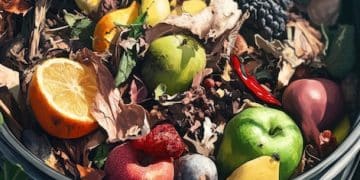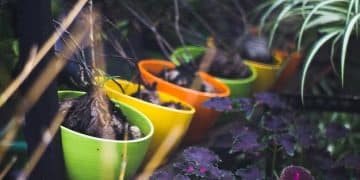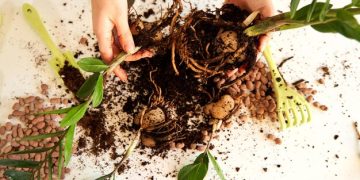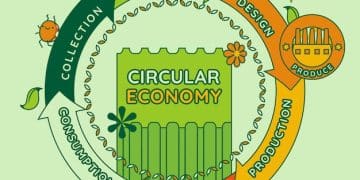The Ultimate Guide to Composting for Waste Reduction & Soil Enrichment
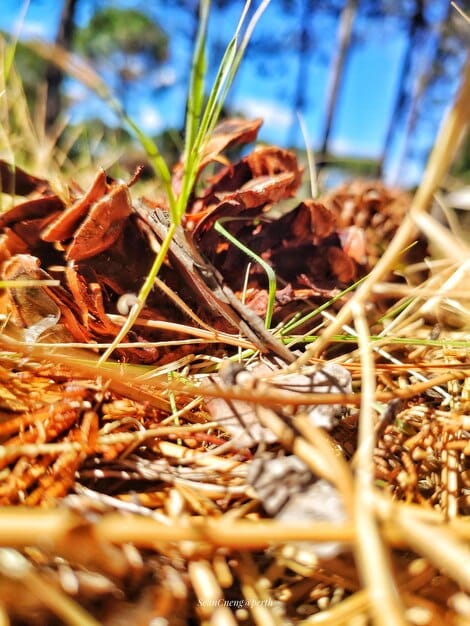
Achieving up to a 50% reduction in household waste and significantly enhancing garden soil fertility is highly attainable through the strategic implementation of composting, a natural process converting organic matter into nutrient-rich humus, benefiting both the environment and personal gardening endeavors.
Delving into the world of backyard composting can seem daunting at first, yet it offers a remarkably straightforward and impactful way to transform common organic waste into a valuable resource. This comprehensive guide, The Ultimate Guide to Composting: Reduce Waste by 50% and Enrich Your Garden Soil, aims to demystify the process, revealing how this simple act can dramatically cut down household waste while simultaneously creating a rich, natural fertilizer for your garden.
Understanding the Composting Process: The Science Behind the Transformation
Composting is far more than just piling up kitchen scraps and garden trimmings; it’s a sophisticated biological process driven by microorganisms. These tiny helpers, including bacteria, fungi, and other decomposers, break down organic materials into a dark, crumbly, nutrient-rich substance known as humus, or “black gold.” This natural recycling system not only diverts waste from landfills but also creates a powerful soil amendment that boosts plant health and reduces the need for chemical fertilizers.
The success of composting hinges on providing an optimal environment for these microorganisms. This involves a delicate balance of “greens” and “browns,” moisture, and aeration. Understanding these fundamental elements is the first step toward building a thriving compost pile that consistently produces high-quality compost.
The Essential Elements of Composting
To ensure your compost pile breaks down efficiently, it requires a specific combination of ingredients, often categorized as “greens” and “browns.”
- “Greens” (Nitrogen-Rich): These materials provide the nitrogen necessary for microbial growth and activity. Think of fresh kitchen scraps, grass clippings, and plant trimmings.
- “Browns” (Carbon-Rich): Carbon forms the backbone of the compost structure and provides energy for the decomposers. Examples include dried leaves, wood chips, shredded paper, and cardboard.
Beyond the greens and browns, moisture is crucial, akin to a wrung-out sponge, facilitating microbial activity without suffocating the process. Aeration, or regular turning of the pile, ensures oxygen circulates throughout, preventing foul odors and speeding up decomposition. By diligently managing these components, you can transform what might seem like waste into a valuable amendment for your garden.
Choosing Your Composting Method: Tailoring to Your Lifestyle
There isn’t a one-size-fits-all approach to composting. The best method depends on your available space, the volume of waste you generate, and your desired level of involvement. From simple backyard piles to advanced vermicomposting systems, understanding the options helps you choose the most effective and sustainable solution for your needs.
Each method offers distinct advantages and considerations, from the speed of decomposition to the types of materials that can be processed. Whether you’re looking for a low-maintenance option or a rapid composting solution, there’s a method perfectly suited for almost any home and garden.
Traditional Open Pile Composting
This classic method is ideal for those with ample outdoor space and a steady supply of yard waste. An open pile allows for easy access and aeration, though it may take longer to break down materials and often benefits from regular turning. It’s a simple, cost-effective way to get started with composting.
Compost Bins and Tumblers
For smaller yards or those seeking a tidier solution, enclosed compost bins or tumblers are excellent choices. Bins contain the pile, deterring pests, while tumblers make aeration effortless, speeding up the decomposition process. These systems are great for managing kitchen scraps and smaller quantities of garden waste.
- Pros of Bins: Neater, deter pests, good for urban settings.
- Pros of Tumblers: Faster composting due to easy turning, contained system.
Vermicomposting (Composting with Worms)
Vermicomposting utilizes specialized composting worms (typically red wigglers) to break down organic matter. This method is perfect for indoor composting or small spaces, including apartments, as it produces remarkably rich compost (worm castings) quickly and with minimal odor. It’s particularly effective for processing kitchen scraps.
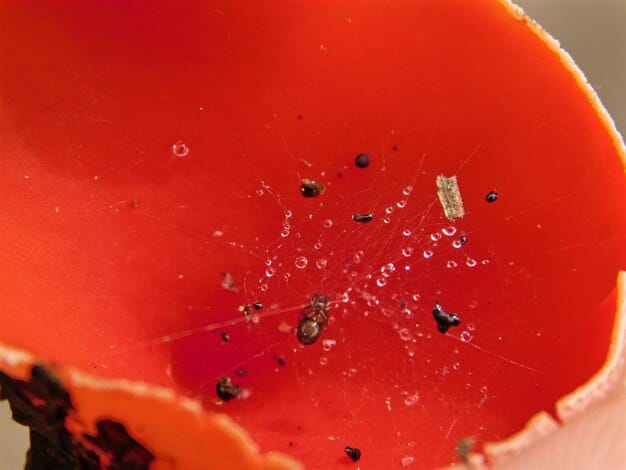
Choosing the right method is about balancing your practical constraints with your composting goals, ensuring the process remains enjoyable and sustainable in the long term.
What to Compost and What to Avoid: The Golden Rules for Healthy Humus
Knowing what goes into your compost pile is just as important as knowing what stays out. The right ingredients ensure a healthy, odor-free decomposition process, yielding high-quality compost. Conversely, improper additions can invite pests, create unpleasant smells, or introduce pathogens, compromising the entire batch.
Adhering to these guidelines not only results in better compost but also simplifies the management of your pile, making the entire composting journey more rewarding and efficient.
Compostable Materials: The “Yes” List
Focus on a balanced mix of “greens” and “browns.”
- “Greens”: Fruit and vegetable scraps, coffee grounds and filters, tea bags, grass clippings, fresh plant trimmings.
- “Browns”: Dried leaves, shredded newspaper, cardboard (unwaxed), wood chips, straw, sawdust (from untreated wood), paper towels (used for non-toxic purposes).
These materials provide the necessary carbon and nitrogen ratios for optimal microbial activity, ensuring a rapid and effective breakdown.
Materials to Avoid: The “No” List
Certain items should never enter your compost pile due to potential issues:
- Meat, bones, and dairy products: Attract pests, create foul odors, and can introduce harmful bacteria.
- Oils, fats, and grease: Slow down decomposition, attract pests, and produce unpleasant smells.
- Diseased plants: Can spread pathogens to your garden, potentially harming new plants.
- Pet waste (dog or cat): Contains pathogens harmful to humans and should only be composted in specialized systems if at all.
- Chemically treated wood or plants: May introduce harmful chemicals into your compost and ultimately your garden.
By carefully selecting your compost ingredients, you maintain the health of your compost system, leading to a nutrient-rich product that safely enhances your garden’s vitality.
Maintaining Your Compost Pile: Tips for Success and Troubleshooting
Once your compost pile is established, ongoing maintenance is key to ensuring its productivity and preventing common issues. Regular monitoring of moisture levels, aeration, and material balance will keep your microorganisms happy and hard at work, turning your waste into valuable soil amendment.
Addressing minor problems early can prevent them from escalating, ensuring a continuous supply of high-quality compost. Even experienced composters encounter challenges, and knowing how to troubleshoot them effectively is an essential skill.
Achieving the Right Moisture Content
Your compost pile should consistently feel like a damp, wrung-out sponge. Too dry, and decomposition slows to a crawl; too wet, and the pile can become anaerobic, leading to foul odors. Periodically check the moisture and add water if necessary, especially during dry spells, or add more dry “brown” materials if it’s too wet.
Ensuring Adequate Aeration
Oxygen is vital for the aerobic microorganisms that do the heavy lifting in your compost. Turning your pile regularly — ideally once a week or every few weeks — introduces air, prevents compaction, and distributes moisture and nutrients evenly. This practice also helps speed up the decomposition process significantly.
Balancing Greens and Browns
The ideal carbon-to-nitrogen ratio is roughly 25-30 parts carbon to 1 part nitrogen. Practically, this means aiming for about two to three parts “browns” to one part “greens” by volume. If your pile is too wet and smelly, add more browns; if it’s too dry and slow, add more greens and some water.
Common issues like unpleasant odors (too wet or too many greens), attracting pests (improper materials), or a pile that isn’t heating up (lack of nitrogen or too dry) can almost always be resolved by adjusting these core elements. Patience and observation are your best tools in maintaining a vibrant and productive compost system.
Harnessing the Power of Finished Compost: Benefits for Your Garden
The reward for your composting efforts is the rich, dark, earthy material known as finished compost. This “black gold” is a powerhouse of nutrients and beneficial microorganisms, ready to revitalize your garden soil. Understanding how to use it effectively maximizes its profound impact on plant health and overall garden productivity.
Finished compost significantly improves soil structure, enhances water retention, and provides a slow-release source of essential nutrients, fostering a thriving ecosystem both above and below ground.
Improved Soil Structure and Fertility
Adding compost to your soil transforms its physical structure. In sandy soils, compost helps particles bind together, improving water retention and nutrient availability. For heavy clay soils, it creates larger pore spaces, enhancing drainage and aeration. This structural improvement fosters healthy root development and overall plant vigor.
- Enhances Water Retention: Reduces the need for frequent watering.
- Improves Drainage: Prevents waterlogging in heavy soils.
- Boosts Aeration: Provides oxygen for root systems and soil microorganisms.
Nutrient Supply and Disease Suppression
Compost is not a high-nitrogen fertilizer, but it provides a balanced, slow-release supply of a wide array of macro- and micronutrients essential for plant growth. Moreover, the diverse microbial population in compost helps suppress plant diseases by outcompeting harmful pathogens and promoting a healthy soil food web.
Regular application of finished compost, whether dug into new beds, used as a top dressing, or brewed into a “compost tea,” will lead to healthier, more resilient plants, more vibrant blooms, and more abundant harvests, all while reducing dependence on synthetic fertilizers and pesticides. It truly closes the loop in a sustainable garden ecosystem, demonstrating the profound benefits of natural recycling.
The Environmental Impact and Broader Benefits of Composting
Beyond the immediate benefits to your garden, composting plays a pivotal role in environmental sustainability. By diverting organic waste from landfills, it significantly reduces greenhouse gas emissions, conserves natural resources, and mitigates pollution, contributing to a healthier planet for everyone.
The act of composting, simple as it may seem, is a powerful statement of commitment to ecological responsibility, offering tangible benefits that extend far beyond your backyard fence.
Reducing Landfill Waste and Methane Emissions
Organic materials, such as food scraps and yard waste, constitute a significant portion of municipal solid waste. When these materials end up in landfills, they decompose anaerobically (without oxygen), producing methane, a potent greenhouse gas that contributes significantly to climate change. Composting, an aerobic process, largely avoids methane production, offering a vital climate solution.
- Diverts Waste: Less trash sent to already overflowing landfills.
- Mitigates Methane: Significantly reduces a powerful greenhouse gas emission.
Soil Health and Biodiversity
The benefits of compost extend to soil health on a broader scale. By improving soil structure, increasing water retention, and enriching nutrient content, compost reduces soil erosion, lessens the need for irrigation, and decreases reliance on synthetic fertilizers and pesticides. This fosters greater biodiversity in soil ecosystems, leading to more resilient agricultural systems and healthier natural habitats.
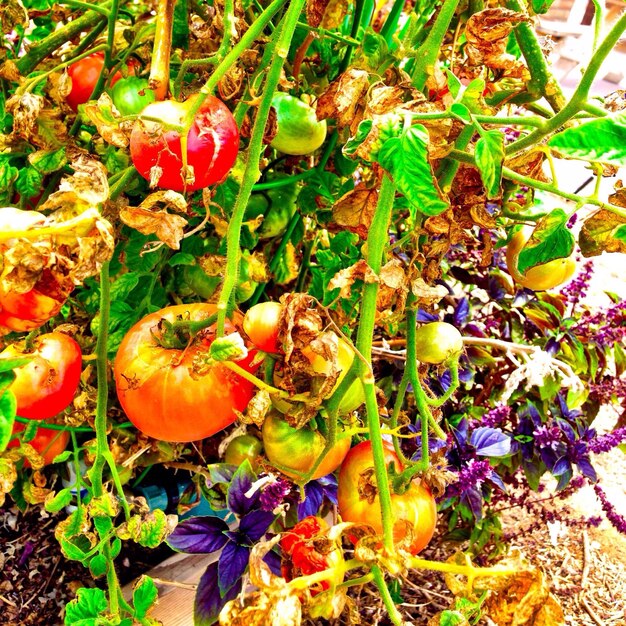
Embracing composting is a proactive step toward a more sustainable future. It empowers individuals to take direct action against waste, contribute to a healthier environment, and cultivate a deeper connection with the natural world, reinforcing the cycle of life and renewal.
| Key Takeaways | Brief Description |
|---|---|
| 🔄 Waste Reduction | Composting diverts up to 50% of household organic waste from landfills, reducing methane emissions. |
| 🌱 Soil Enrichment | Produces nutrient-rich humus, improving soil structure, water retention, and plant health naturally. |
| ⚖️ Balanced System | Success depends on the right mix of “greens” (nitrogen) and “browns” (carbon), plus moisture and air. |
| 🌍 Environmental Impact | Contributes to climate change mitigation and supports broader ecological biodiversity. |
Frequently Asked Questions About Composting
The ideal carbon-to-nitrogen ratio is approximately 25-30 parts carbon (“browns”) to 1 part nitrogen (“greens”) by weight. In practical terms, this often translates to about two to three parts brown materials to one part green materials by volume. Achieving this balance helps ensure optimal microbial activity and efficient decomposition, preventing odor issues and promoting a healthy compost pile.
The time it takes for compost to become usable varies widely depending on the composting method, the materials used, and how well the pile is managed. Active, well-maintained hot compost piles can finish in as little as 2-3 months. Slower, passive cold composting methods may take 6 months to a year or even longer. Regular turning and proper moisture levels can significantly speed up the decomposition process.
Yes, you can generally compost citrus peels and onion scraps in small to moderate amounts. While some composters avoid them due to their acidity or potential to deter earthworms in vermicomposting systems, they break down just fine in traditional compost piles. Chopping them into smaller pieces will help them decompose faster. Ensure they are well-mixed with other materials to maintain balance.
A foul-smelling compost pile usually indicates an anaerobic condition, meaning there isn’t enough oxygen. This often happens if the pile is too wet or has too many “greens” (nitrogen-rich materials) without enough “browns” (carbon-rich materials). To fix it, turn the pile thoroughly to introduce air, and add more dry, carbon-rich materials like dried leaves, shredded paper, or wood chips to absorb excess moisture.
Finished compost is dark brown or black, crumbly, and has an earthy, forest-floor smell. The original materials should be unrecognizable, and the pile should no longer be heating up. It should also be teeming with beneficial organisms, but without any remaining odor of decay. If you can still identify food scraps or other organic matter, it needs more time to decompose fully.
Conclusion
Embracing composting is a journey that offers profound benefits, transforming household organic waste into a rich, life-giving resource for your garden. It’s a powerful act of environmental stewardship, contributing significantly to waste reduction, minimizing harmful greenhouse gas emissions, and fostering healthier ecosystems. By applying the principles outlined in this guide—from selecting the right method to balancing your “greens” and “browns” and understanding its profound ecological impact—you empower yourself to cultivate not just a vibrant garden, but also a more sustainable lifestyle. Start your composting adventure today; the earth, and your plants, will thank you.
